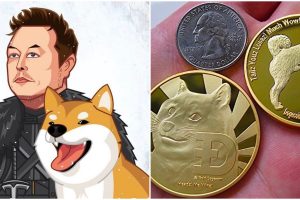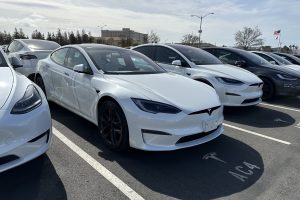The adoption of electric vehicles has continued to skyrocket over the past several years despite challenging supply chain conditions, less-than-ideal geopolitical scenarios, lingering effects of the COVID-19 pandemic, and the soaring cost of EV materials. How this optimism remains was examined in a recent white paper from Cox Automotive, which outlined how EVs continue to defy all odds and gain market share, despite monumental challenges standing in the sector’s way.
EV ADOPTION GROWS DESPITE ROUGH CONDITIONS
The state of EV adoption is relatively healthy, with more Americans buying EVs than ever despite increased costs and extended wait times for delivery. Automakers across the EV manufacturing industry have been forced to adjust prices and vehicle lineups due to the increased cost of materials and supply chain deals. Tesla, for example, axed the $35,000 Standard Range+ Model 3, and its most affordable vehicle now starts at well over $40,000. Rivian was forced to push prices upward due to materials costs soaring after Russia’s invasion of Ukraine, and these examples are just two of many.
Supply chain bottlenecks have also forced consumers to push back wait times for EVs considerably. Some configurations of EVs are not available until next year due to extensive order logs; take the Long Range Tesla Model 3, for example, which won’t be available until 2023 because of its heavy demand.
Despite this, EV adoption has increased every year since 2019. “Americans are buying EVs at a record pace despite rising prices and long waits for delivery. The fleet industry is also taking note with fleet operators highly motivated to replace their gas-powered fleets with EVs to achieve sustainability goals, drive efficiency and reduce total cost of ownership,” Cox Automotive wrote in the summation of its white paper.
PRICE PARITY AND THE EV TAX CREDIT
Price parity has always been talked about when it comes to EVs. It does not take a genius to figure out that the average person will choose an affordable car over an expensive one, even if the expensive one will not require weekly stops at the pump. However, one of the biggest things keeping EVs from extremely rapid adoption is the prices of the cars themselves, which have increased considerably over the past year due to materials costs soaring.
Luckily, consumers can take advantage of the Inflation Reduction Act, which will provide EV buyers with tax credits based on where their vehicle was manufactured and whether the car equips a U.S.-manufactured battery. “Tax incentives available as part of the Inflation Reduction Act of 2022 will be critical to consumer adoption, helping offset the cost of pricey EVs.” This is a key point in the mass adoption in EVs, and consumers will likely stick to gas-powered cars as long as they are able to if they are more affordable than a quality EV.
SUPPLY CHAIN DISRUPTIONS HAVE SLOWED EV ADOPTION CONSIDERABLY
Related to other points already made, supply chain disruptions and constraints are slowing EV adoption. U.S.-based EV manufacturers are too reliant on foreign companies for parts, Cox said. Automakers are pushing to produce battery packs and other parts in the U.S., which will eventually help combat slow logistics times.
“Global computer chip and material shortages are impacting production, raising the price of new and used vehicles, and contributing to long waits to buy new EV models.” Consumers want affordable and they want it now. Costs will continue to remain high, and wait times will stay long if U.S. automakers do not adopt domestic supply chain strategies.
SUPERIOR EV TECH IS KEEPING THE U.S. COMPETITIVE
Domestic supply chain bottlenecks may have some consumers willing to spend a little extra opting for other vehicle options. If someone is willing to spend $160,000 on a car and they can buy a 2022 Porsche 911 GT3 and get it in two weeks, they’re more likely to buy that instead of waiting months for a Tesla Model S Plaid if environmental reasons and fuel savings are not being considered. Tech and the innovations of battery chemistries and recycling are keeping the U.S. automakers in focus. If battery makers can develop various battery chemistries comprised of materials that can be sourced in the U.S., wait times will reduce and cars will have more availability.





